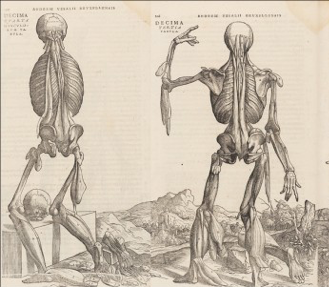Exact Sciences
The history of the exact sciences shows how our knowledge has changed over the course of the centuries.
Opening an anatomical atlas from 1543 clearly reveals what scientists of the day knew, and how they conceived the human body. But the history of the exact sciences is also that of pharmacology, economics, mathematics, physics and computers.
The collection
The basis of the exact science collections at the Allard Pierson was laid at the end of the 19th century when a number of important libraries were acquired: the Royal Dutch Medical Association (KNMG, loan 1855), the Association for Promoting Physics, Medicine and Surgery (GNGH, donation 1877), the Royal Dutch Association for the Promotion of Pharmacology (KNMP, loan 1881) and the Royal Dutch Mathematical Society (KWG, loan 1880). The latter contains works across the entire breadth of the exact (applied) sciences. The KNMG library is regarded as one of the most important medical history libraries in the world. The breadth of these collections means that they are often used for research into the history of medicine, mathematics, physics and other exact fields.
The Computer Museum at the Science Park in Amsterdam-East has since 2007 also been part of the Allard Pierson. The Computer Museum displays the progress made in computer technology, making use of technical and scientific electronic computer equipment. The museum can be visited on request.
